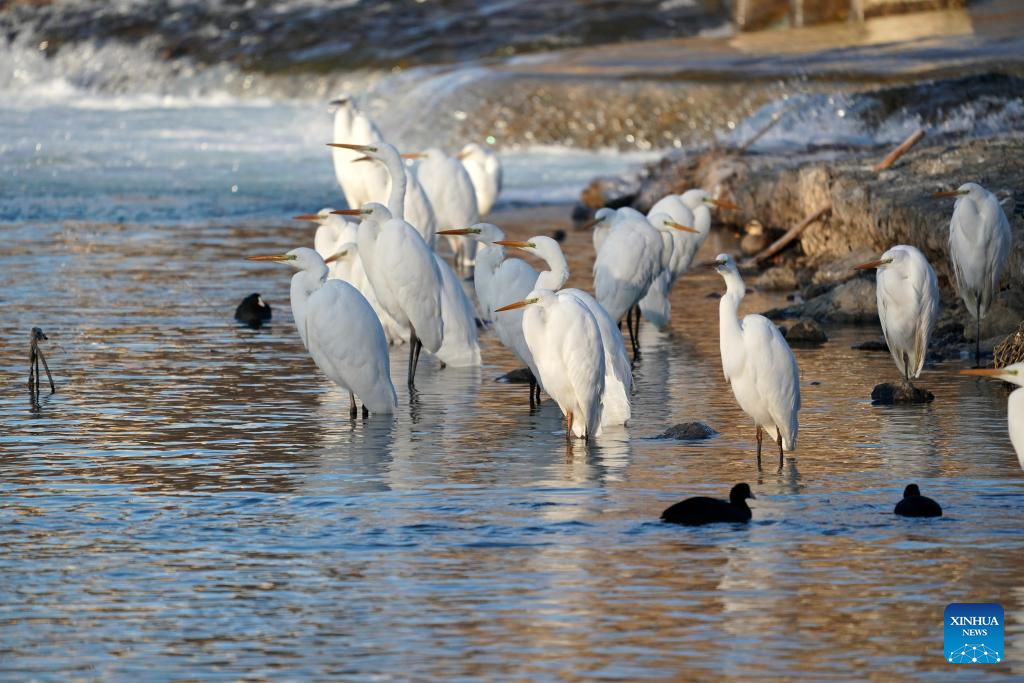
Egrets are pictured in Fenhe River in Taiyuan, north China's Shanxi Province, Jan. 3, 2024. As the second-largest tributary of the Yellow River, Fenhe River stretches over 710 km, feeding a quarter of the population of Shanxi, thus known as the "mother river" of Shanxi.
In recent years, Shanxi has rolled out a series of rules and regulations to accelerate the treatment and protection of rivers and lakes. Many wetland parks were set up along rivers, attracting a large number of migratory birds. (Xinhua/Zhan Yan)
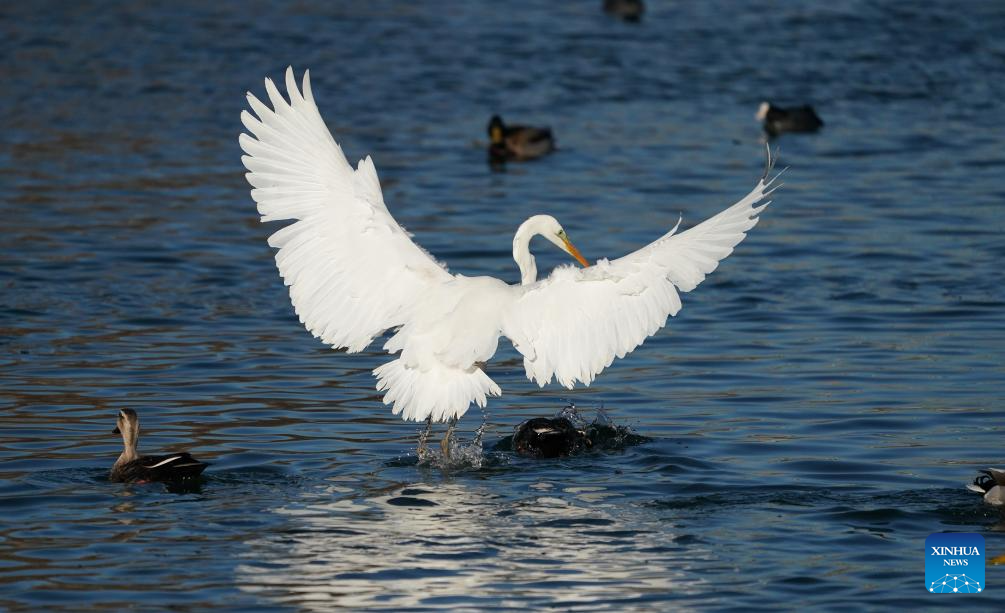
An egret forages in Fenhe River in Taiyuan, north China's Shanxi Province, Jan. 3, 2024. As the second-largest tributary of the Yellow River, Fenhe River stretches over 710 km, feeding a quarter of the population of Shanxi, thus known as the "mother river" of Shanxi.
In recent years, Shanxi has rolled out a series of rules and regulations to accelerate the treatment and protection of rivers and lakes. Many wetland parks were set up along rivers, attracting a large number of migratory birds. (Xinhua/Zhan Yan)
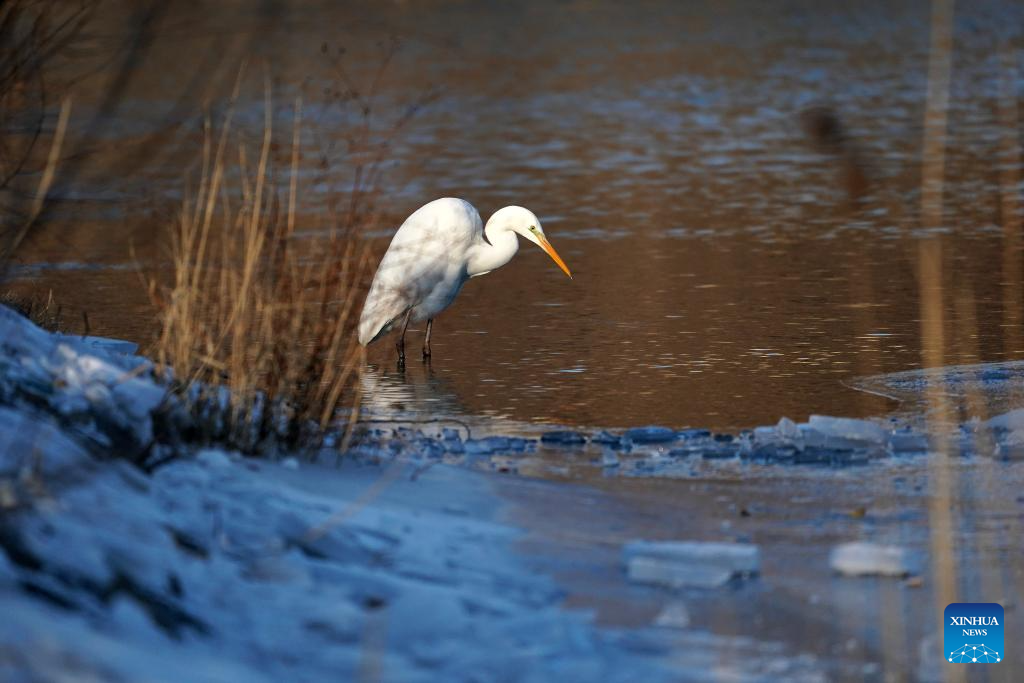
An egret forages in Fenhe River in Taiyuan, north China's Shanxi Province, Jan. 3, 2024. As the second-largest tributary of the Yellow River, Fenhe River stretches over 710 km, feeding a quarter of the population of Shanxi, thus known as the "mother river" of Shanxi.
In recent years, Shanxi has rolled out a series of rules and regulations to accelerate the treatment and protection of rivers and lakes. Many wetland parks were set up along rivers, attracting a large number of migratory birds. (Xinhua/Zhan Yan)
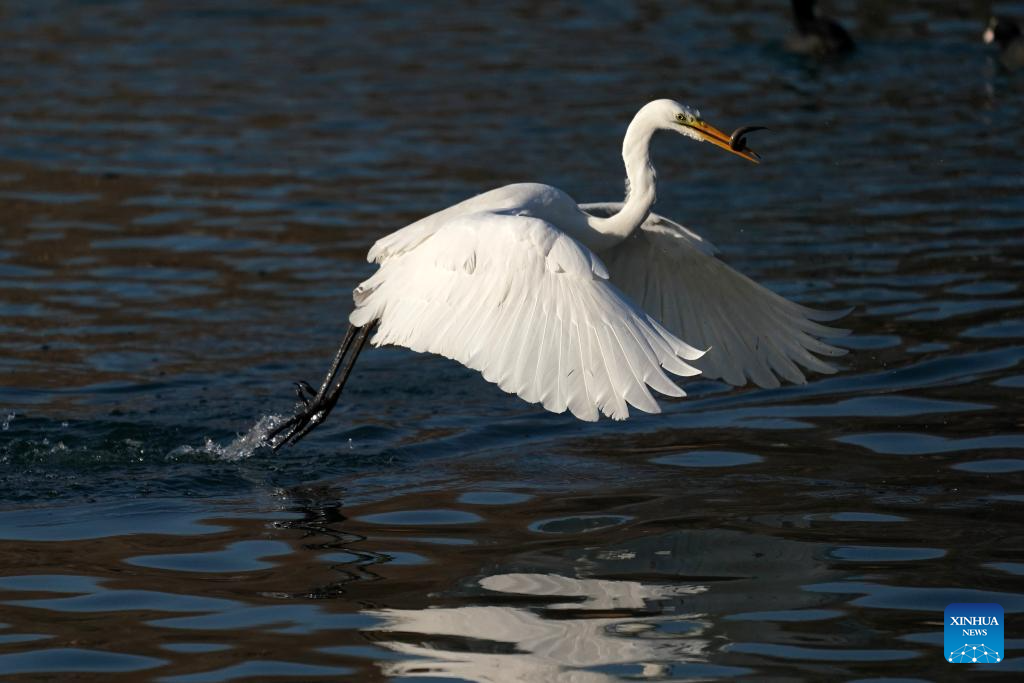
An egret forages in Fenhe River in Taiyuan, north China's Shanxi Province, Jan. 3, 2024. As the second-largest tributary of the Yellow River, Fenhe River stretches over 710 km, feeding a quarter of the population of Shanxi, thus known as the "mother river" of Shanxi.
In recent years, Shanxi has rolled out a series of rules and regulations to accelerate the treatment and protection of rivers and lakes. Many wetland parks were set up along rivers, attracting a large number of migratory birds. (Xinhua/Zhan Yan)
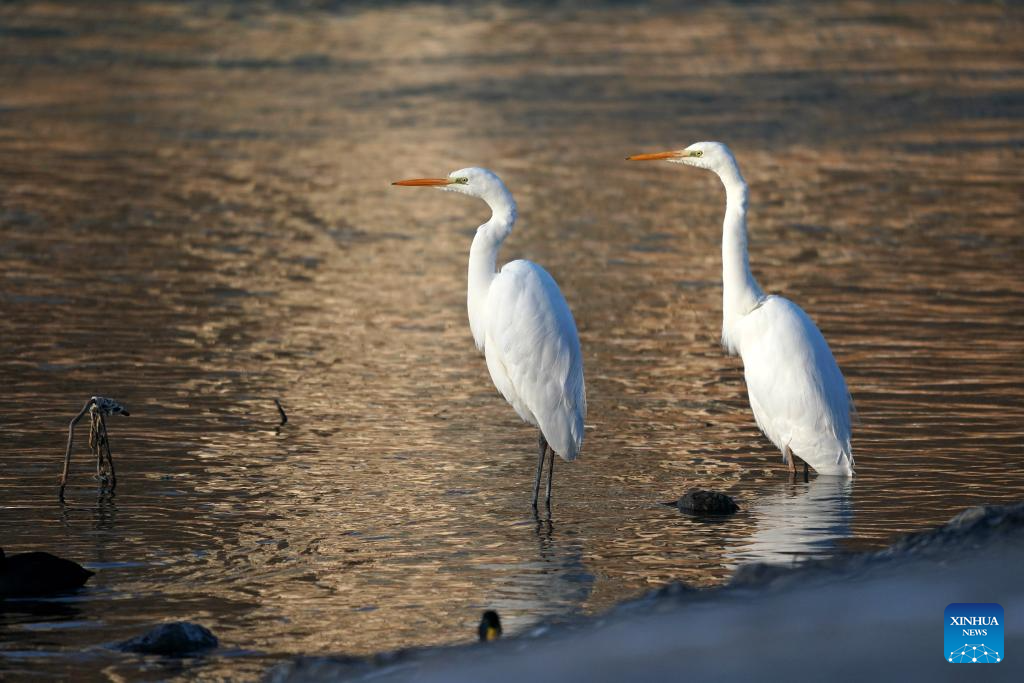
Egrets are pictured in Fenhe River in Taiyuan, north China's Shanxi Province, Jan. 3, 2024. As the second-largest tributary of the Yellow River, Fenhe River stretches over 710 km, feeding a quarter of the population of Shanxi, thus known as the "mother river" of Shanxi.
In recent years, Shanxi has rolled out a series of rules and regulations to accelerate the treatment and protection of rivers and lakes. Many wetland parks were set up along rivers, attracting a large number of migratory birds. (Xinhua/Zhan Yan)

Egrets are pictured in Fenhe River in Taiyuan, north China's Shanxi Province, Jan. 3, 2024. As the second-largest tributary of the Yellow River, Fenhe River stretches over 710 km, feeding a quarter of the population of Shanxi, thus known as the "mother river" of Shanxi.
In recent years, Shanxi has rolled out a series of rules and regulations to accelerate the treatment and protection of rivers and lakes. Many wetland parks were set up along rivers, attracting a large number of migratory birds. (Xinhua/Zhan Yan)

An egret forages in Fenhe River in Taiyuan, north China's Shanxi Province, Jan. 3, 2024. As the second-largest tributary of the Yellow River, Fenhe River stretches over 710 km, feeding a quarter of the population of Shanxi, thus known as the "mother river" of Shanxi.
In recent years, Shanxi has rolled out a series of rules and regulations to accelerate the treatment and protection of rivers and lakes. Many wetland parks were set up along rivers, attracting a large number of migratory birds. (Xinhua/Zhan Yan)

Egrets are pictured in Fenhe River in Taiyuan, north China's Shanxi Province, Jan. 3, 2024. As the second-largest tributary of the Yellow River, Fenhe River stretches over 710 km, feeding a quarter of the population of Shanxi, thus known as the "mother river" of Shanxi.
In recent years, Shanxi has rolled out a series of rules and regulations to accelerate the treatment and protection of rivers and lakes. Many wetland parks were set up along rivers, attracting a large number of migratory birds. (Xinhua/Zhan Yan)

Egrets are pictured in Fenhe River in Taiyuan, north China's Shanxi Province, Jan. 3, 2024. As the second-largest tributary of the Yellow River, Fenhe River stretches over 710 km, feeding a quarter of the population of Shanxi, thus known as the "mother river" of Shanxi.
In recent years, Shanxi has rolled out a series of rules and regulations to accelerate the treatment and protection of rivers and lakes. Many wetland parks were set up along rivers, attracting a large number of migratory birds. (Xinhua/Zhan Yan)
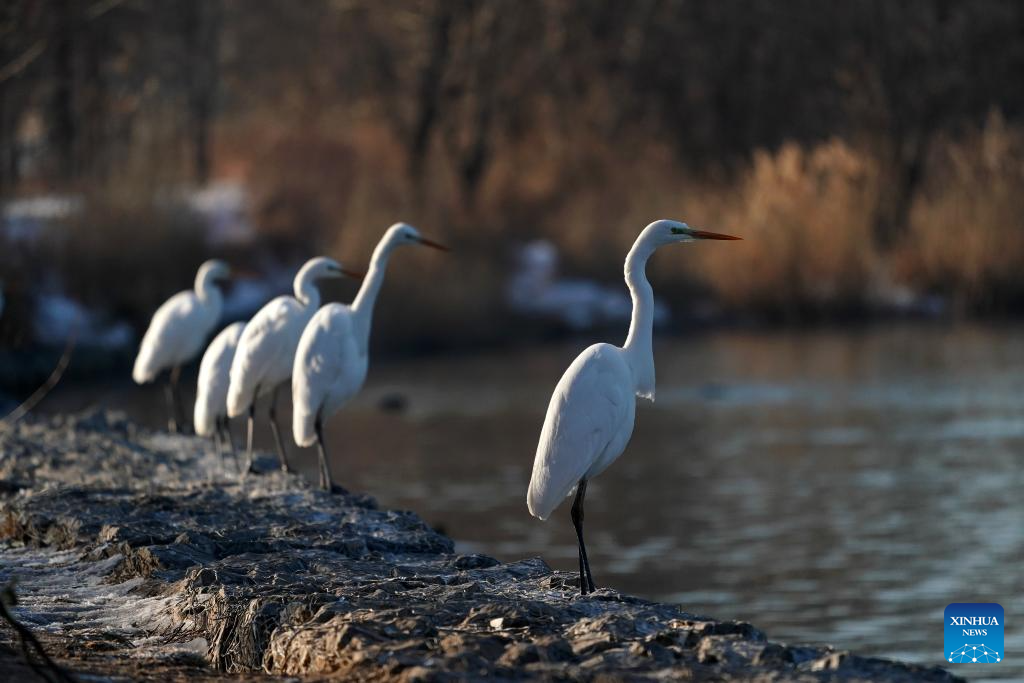
Egrets are pictured by Fenhe River in Taiyuan, north China's Shanxi Province, Jan. 3, 2024. As the second-largest tributary of the Yellow River, Fenhe River stretches over 710 km, feeding a quarter of the population of Shanxi, thus known as the "mother river" of Shanxi.
In recent years, Shanxi has rolled out a series of rules and regulations to accelerate the treatment and protection of rivers and lakes. Many wetland parks were set up along rivers, attracting a large number of migratory birds. (Xinhua/Zhan Yan)

An egret flies over Fenhe River in Taiyuan, north China's Shanxi Province, Jan. 3, 2024. As the second-largest tributary of the Yellow River, Fenhe River stretches over 710 km, feeding a quarter of the population of Shanxi, thus known as the "mother river" of Shanxi.
In recent years, Shanxi has rolled out a series of rules and regulations to accelerate the treatment and protection of rivers and lakes. Many wetland parks were set up along rivers, attracting a large number of migratory birds. (Xinhua/Zhan Yan)
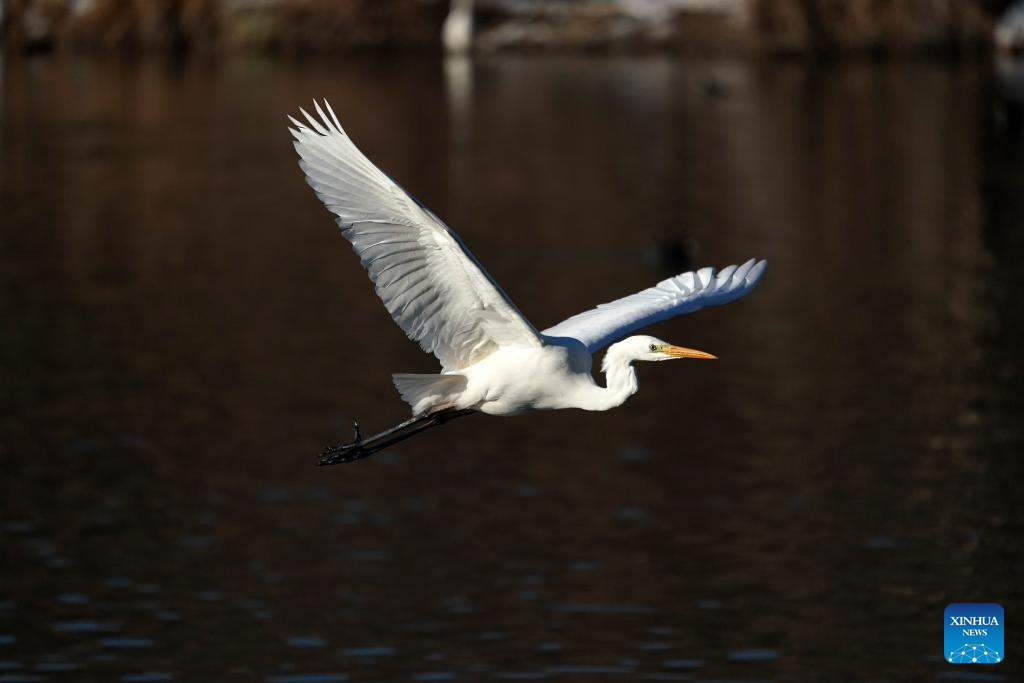
An egret flies over Fenhe River in Taiyuan, north China's Shanxi Province, Jan. 3, 2024. As the second-largest tributary of the Yellow River, Fenhe River stretches over 710 km, feeding a quarter of the population of Shanxi, thus known as the "mother river" of Shanxi.
In recent years, Shanxi has rolled out a series of rules and regulations to accelerate the treatment and protection of rivers and lakes. Many wetland parks were set up along rivers, attracting a large number of migratory birds. (Xinhua/Zhan Yan)



